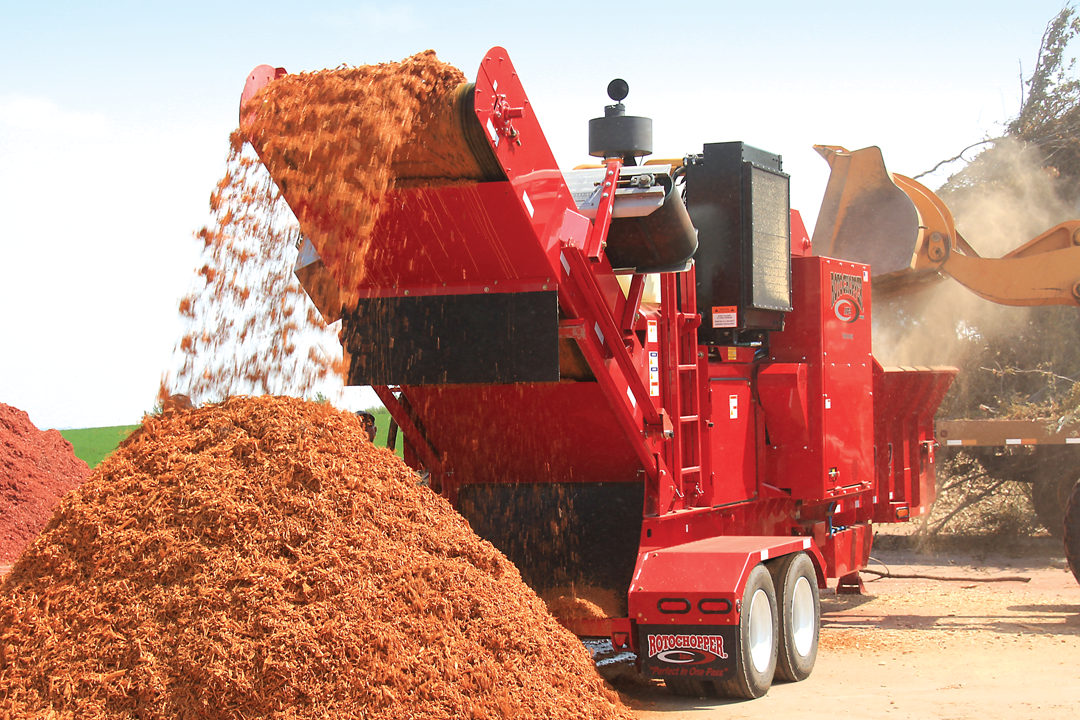
When starting any new business venture, there are a lot of things to consider, from your goals to your staff, to your standards for the end product. Starting a horizontal grinding operation is no different. In fact, there may be even more things to consider than your average startup.
In previous articles, we’ve covered the necessary considerations for buying a horizontal grinder. However, if you’ve just begun thinking about starting a grinding business, there are several factors to examine that will help determine whether the operation will be a profitable venture.
Operational Goals
Your operational goal is one of the most important issues to consider before starting a horizontal grinding operation. Are you aiming for waste and volume reduction or a secondary product that can be sold? Both are worthwhile reasons for starting a grinding operation but identifying your goal early will help inform other decisions down the line.
If you frequently deal with the tipping fees associated with transporting your material to a landfill, a horizontal grinder can help reduce that cost. Ground material takes up less space, allowing you to fit more into the same space as unground material. You’re paying the same for tipping fees but grinding the material before disposal means you can transport more material for your money.
Alternatively, you can turn that ground material into a product that can be sold alongside your main venture. For example, a construction and demolition company might look to reduce the cost of their tipping fees. They could pre-grind the material for easier and more efficient disposal, or they could turn their wood waste into a profitable secondary product, like mulch, and avoid tipping fees altogether.
Feedstock Access and End Product Market
Feedstock access and the market for your end product are factors that are both indicative of whether or not a grinding operation will be profitable. Ask yourself:
- Do I have enough of my material to make grinding worthwhile?
- Can I count on a steady, consistent stream of feedstock?
If the answer to either of those questions is no, you may need to consider other methods of obtaining additional feedstock. Some operations utilize roll-off services, while others offer an opportunity for the community to dispose of unwanted material instead of having it taken to a landfill.
If your goal is to sell a secondary product, you’ll also need a solid understanding of what the market looks like for your end product. Is there demand in your geographic area, or will shipping costs need to be factored in? Are there competitors already present in the market? Is there an untapped niche you can fill? The answers to these questions will help you determine if there’s an audience for your end product, which will ultimately decide whether your operation is profitable.
Operational Costs
While considering your potential operation’s budget, you’ll need to factor in operational costs. If you don’t plan to run the horizontal grinder yourself, you’ll need to hire a dedicated operation, one who’s either experienced or ready to learn.
As with any large machine, maintenance costs are also at play. The extent of that maintenance can vary depending on whether you invest in a diesel or electric grinder, as there are different tasks associated with each. Either way, Rotochopper can help you stay on top of grinder maintenance with our preventative maintenance program. In addition, our remote monitoring system RotoLink™ allows grinder operators to track small maintenance needs before they turn into larger, more costly repairs.
Lastly, consider the additional features you may want to purchase alongside your horizontal grinder. These features can streamline your operation and reduce downtime, recouping their cost over time. For instance, if you plan to produce mulch, a bagger is a worthwhile investment. If you plan to process unsorted C&D material, you may want to consider solutions for ferrous metal removal.
Potential For Expansion
The last consideration on our list looks to the future of your horizontal grinding operation. Do you plan to expand your operation? Or, even if you don’t plan to, is there potential for expansion in the future? These are important questions to consider when it comes to buying your horizontal grinder. The larger the grinder, the more feedstock it will be able to process in a timely manner.
If expansion is a factor, you’ll need to decide whether to:
- Initially purchase a larger grinder with the intent to grow into it
Or,
- Purchase a smaller grinder with the intent to upgrade later
Thankfully, Rotochopper makes it easy to plan your business with the future in mind. There is no shortage of options when it comes to the size of your grinder, and when the time comes to upgrade, we offer business owners the chance to trade in their equipment.
Your Horizontal Grinding Partner
When you’ve made the decision to start a horizontal grinding operation, the company you choose to work with is just as important as your choice of machine. As a factory-direct company, Rotochopper provides our partners with the tools they need to succeed. From ease of ordering replacement parts to expert, responsive service technicians, Rotochopper is committed to supporting our customers in every way we can.
